The story of coffee is as rich and complex as its flavor. This beloved beverage, which has become a cornerstone of cultures around the world, began its journey in ancient times. The earliest credible evidence of coffee drinking appears in the middle of the 15th century in the Sufi monasteries of Yemen. From these humble beginnings, coffee has traversed continents, sparking social revolutions, inspiring creative minds, and becoming an integral part of daily rituals.
Coffee’s cultural significance cannot be overstated. In the 17th and 18th centuries, it was at the heart of the Enlightenment, fueling the intellectual discussions in the coffeehouses of Europe. In modern times, it has evolved to symbolize a plethora of social interactions – from the morning cup that jump-starts our day to the casual coffee meet-ups that connect us with others.
This article delves into the artistry and science behind brewing the perfect cup of coffee. It’s not merely about the choice of beans or the method of preparation; it’s about understanding and appreciating each step of the process – from the farm where the journey begins, to the intricacies of roasting and grinding, to the alchemy of brewing. We will explore the various techniques that have developed across different cultures, each adding its unique signature to this global phenomenon.
Whether you’re a seasoned coffee aficionado or a curious newcomer, this exploration aims to deepen your appreciation for this remarkable drink and perhaps even transform your next cup into an experience of brewing perfection.
The Journey of the Coffee Bean
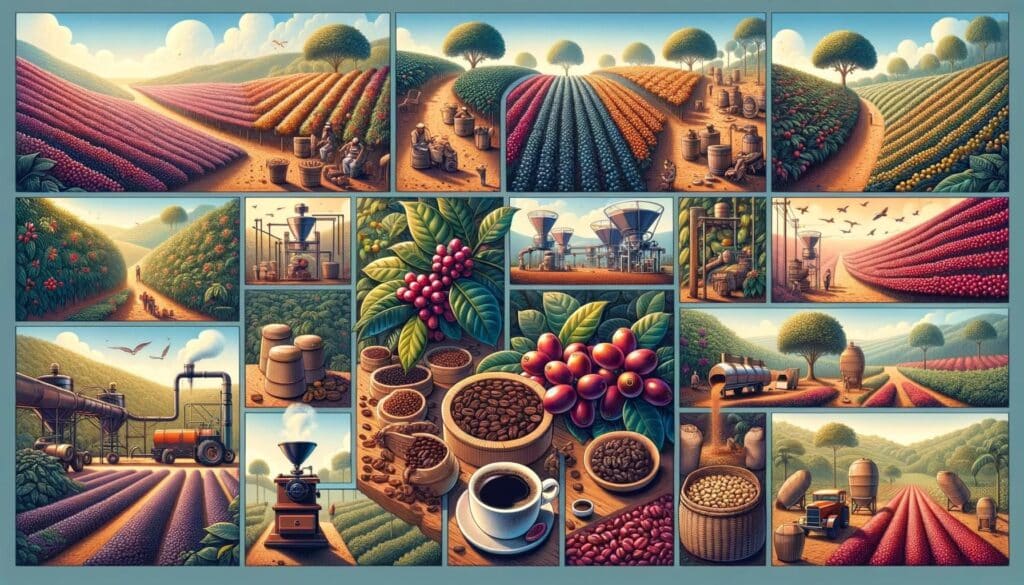
From Farm to Cup
The path a coffee bean takes from its origins in the fields to the final brewed cup is both intricate and fascinating, involving several critical steps:
- Growing:
- Coffee beans begin as seeds planted in large beds in shaded nurseries. The seedlings are nurtured until they are ready to be transferred to open fields. Coffee plants require specific climatic conditions, including appropriate altitude, temperature, and moisture.
- Harvesting:
- Coffee cherries are usually harvested when they reach a ripe, deep red color. Either by hand, which allows for the selective picking of ripe cherries, or by machine. The timing of the harvest is crucial as it influences the final taste of the coffee.
- Processing:
- After harvesting, the beans are processed to remove the outer fruit layers. This can be done through the dry method, where cherries are dried in the sun, or the wet method, which involves fermenting the cherries to loosen the fruit layer.
- Drying:
- The processed beans are dried to an optimal moisture content. This can be achieved through sun drying or using mechanical dryers.
- Milling:
- Once dried, the beans are hulled, where the outer layers are removed. They may undergo additional polishing, grading, and sorting to ensure quality.
- Exporting:
- The milled beans, now known as green coffee, are bagged and shipped to various destinations worldwide, where they are eventually roasted and prepared for consumption.
Varieties of Coffee Beans
- Arabica (Coffea Arabica):
- Arabica beans are known for their sweet, delicate flavor and higher acidity. They are often grown in higher altitudes and require more attention and care. Arabica beans are generally considered superior in quality, offering a wide range of flavors, from fruity and floral to nutty and smooth.
- Robusta (Coffea Canephora):
- Other Varieties:
- In addition to Arabica and Robusta, there are other species and varietals of coffee, such as Liberica and Excelsa, each offering unique flavors and characteristics. These are less common but contribute to the diversity in the world of coffee.
Coffee drinkers all over the world enjoy a rich and varied experience because of this journey from farm to cup, which highlights the complexity and effort behind each coffee bean.
The Science of Roasting

Understanding the Roasting Process
Roasting is where the alchemy of coffee-making truly happens, transforming the raw, green coffee beans into the aromatic brown beans we recognize. This process is crucial as it significantly impacts the beans’ flavor and aroma.
- Chemical Transformation: Roasting triggers a series of chemical reactions within the beans. The most significant is the Maillard reaction, which occurs between amino acids and reducing sugars, creating the complex flavor compounds and aromas characteristic of coffee.
- Moisture and Color Change: As beans are roasted, they lose moisture and expand in size. The color changes from green to yellow to varying shades of brown, indicating the level of roast.
- Crack Stages: During roasting, beans go through “cracks,” audible signals of the stages in the roasting process. The “first crack” signifies a light roast, and a “second crack” indicates a medium to dark roast.
Roast Profiles
The roast level that the roaster chooses determines the coffee’s final flavor profile. Generally, roasts are categorized into light, medium, and dark:
- Light Roasts: Light roasts retain most of the original coffee bean flavor, often resulting in a more acidic, brighter cup with pronounced fruity or floral notes. The beans are light brown, with no oil on the surface.
- Medium Roasts: This roast level strikes a balance between the intrinsic flavors of the bean and the flavors developed during roasting. Medium roasts have a more balanced acidity, body, and aroma, with a richer, darker color than light roasts but no oil on the surface.
- Dark Roasts: Dark roasted beans have a shiny, oily surface and a pronounced bitterness. The flavors from the roasting process dominate, often yielding a bold, robust cup with reduced acidity. The beans are dark brown to almost black in color.
Each roast profile brings out different qualities in the coffee, affecting the complexity, body, and overall flavor experience. The choice of roast is both a science and an art, requiring precision and intuition to unlock the bean’s full potential.
Grinding for Greatness
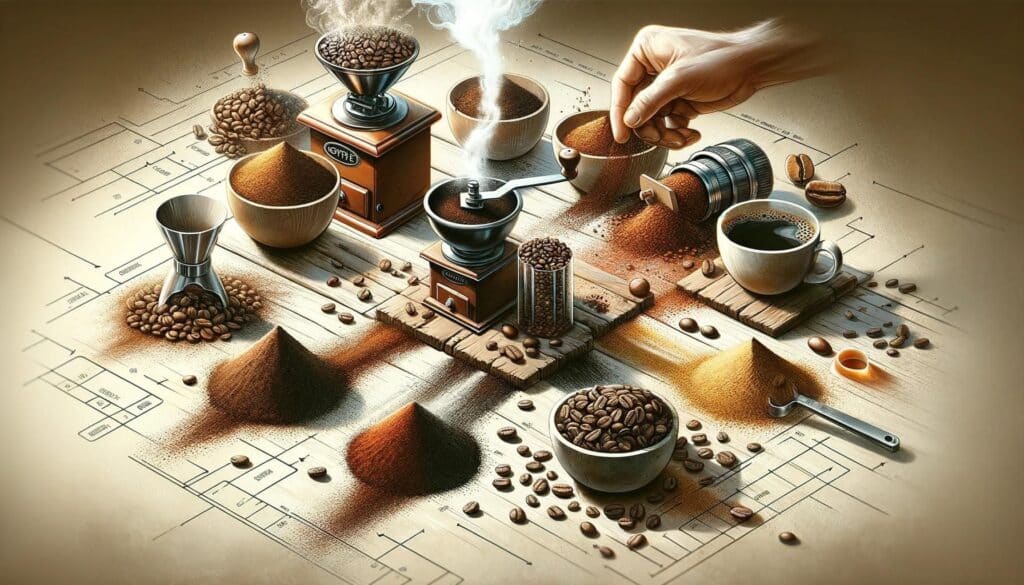
Importance of Grinding in Coffee Preparation
Grinding is a critical step in the coffee-making process, as it significantly influences the extraction rate and, consequently, the taste of the coffee. When coffee beans are ground, they increase in surface area, allowing water to extract flavors and compounds more efficiently. The grind size needs to be suited to the brewing method to achieve the desired extraction level. Too fine a grind can lead to over-extraction, resulting in a bitter taste, while too coarse a grind can cause under-extraction, leading to a weak, sour cup.
Types of Grinders
- Blade Grinders: These grinders use a spinning blade to chop the beans. They are generally less expensive but produce uneven grind sizes, which can adversely affect the brewing process and flavor.
- Burr Grinders: These are preferred by coffee aficionados for their consistency and precision. Burr grinders crush beans between two abrasive surfaces (burrs), which can be adjusted to achieve a uniform grind size. They come in two types:
- Flat Burr Grinders: These provide an extremely consistent grind but can be more expensive and slightly noisier.
- Conical Burr Grinders: They are quieter and less expensive but still offer excellent grind consistency.
Grind Sizes for Various Brewing Methods
- Extra Fine: Almost powdery, ideal for Turkish coffee.
- Fine: Similar in texture to table salt, perfect for espresso.
- Medium-Fine: Slightly coarser than sand, suitable for pour-over methods and some drip coffee makers.
- Medium: The texture is similar to beach sand, ideal for most drip coffee makers.
- Medium-Coarse: Perfect for siphon coffee and some pour-over methods like the Chemex.
- Coarse: Chunky, similar to coarse sea salt, ideal for French press and cold brew.
The grind size plays a pivotal role in the brewing process, influencing the time water is in contact with the coffee grounds. For example, espresso requires a fine grind because the water passes through the coffee quickly, whereas a coarse grind is suitable for a French press where the coffee steeps in the water for several minutes. Understanding and adjusting the grind size for the brewing method is key to extracting the best flavor from the coffee beans.
Brewing Methods Explored

The method used to brew coffee can significantly impact its taste and texture. Each method has its unique characteristics and requires different grind sizes, water temperatures, and brewing times. Here’s an overview of popular brewing techniques:
- Espresso
- Technique: Espresso is made by forcing hot water through finely-ground coffee at high pressure. This method typically uses an espresso machine.
- Taste and Texture: Produces a concentrated, rich, and robust coffee with a layer of crema on top. It has a thicker consistency compared to other brewing methods.
- Drip Coffee
- Technique: Drip coffee is made by dripping hot water over medium-ground coffee, which is held in a filter. Water filters through the coffee, absorbing its oils and essences, before dripping into a pot or carafe.
- Taste and Texture: Drip coffee generally yields a clean, clear cup with good flavor balance and a medium body. It’s versatile and can be adjusted for strength.
- French Press
- Technique: This involves steeping coarse-ground coffee in hot water and then separating the grounds from the liquid with a plunger and mesh filter.
- Taste and Texture: The French press allows for full extraction of coffee oils, resulting in a full-bodied and rich cup. It often has a more robust flavor profile and a thicker mouthfeel than drip coffee.
- Pour-Over
- Technique: Pour-over involves pouring hot water over coffee grounds in a filter. The water drains through the coffee and filter into a carafe or mug.
- Taste and Texture: This method offers a clean, nuanced, and flavorful cup of coffee. The slow brewing process allows for precise flavor extraction, highlighting subtle notes in the coffee.
- Cold Brew
- Technique: Coarse-ground coffee is steeped in cold water for an extended period, usually 12-24 hours, and then filtered.
- Taste and Texture: Cold brew coffee is known for its smooth, sweet, and mellow flavor. It’s less acidic and bitter than hot-brewed coffee, with a full body.
- Aeropress
- Technique: The Aeropress uses air pressure to push hot water through fine or medium-ground coffee into a cup.
- Taste and Texture: It produces a cup similar to espresso but less concentrated. It’s known for its smooth, rich flavor with low acidity.
- Moka Pot
- Technique: Water in the bottom chamber of the pot is heated and creates pressure that forces hot water up through the coffee grounds in the middle chamber, resulting in coffee collected in the top chamber.
- Taste and Texture: Moka pot coffee is strong, rich, and bold, somewhat similar to espresso but less concentrated.
Each brewing method offers a unique experience in terms of taste, aroma, and mouthfeel, catering to different preferences and occasions. Understanding these methods allows coffee lovers to experiment and find their personal favorite way of enjoying this versatile beverage.
The Water Factor

Role of Water Quality and Temperature in Brewing Coffee
Water plays a pivotal role in the coffee brewing process. Since coffee is about 98% water, the quality and temperature of the water used can significantly influence the taste of the final brew.
- Water Quality:
- Mineral Content: The mineral content of water can affect the extraction of flavors from coffee grounds. Soft water (low in minerals) may under-extract, leading to a flat taste, while hard water (high in minerals) can over-extract, resulting in a bitter flavor.
- Chlorine and Impurities: Tap water often contains chlorine and other impurities that can impart undesirable flavors to coffee. Using filtered or bottled water can help in achieving a purer coffee taste.
- Water Temperature:
- Optimal Range: The ideal temperature for brewing most types of coffee is between 195°F to 205°F (90°C to 96°C). Temperatures below this range can lead to under-extraction, making the coffee taste weak or sour, while higher temperatures can cause over-extraction, resulting in bitterness.
- Consistency: Maintaining a consistent water temperature during brewing is essential for flavor extraction.
Tips for Selecting and Treating Water for the Best Results
- Use Filtered Water: If your tap water tastes good on its own, it’s likely fine for coffee brewing. However, for the best taste, use filtered water to remove chlorine and other impurities.
- Consider Bottled Water: If tap water quality is not optimal, bottled water can be a good alternative. Some enthusiasts even blend different bottled waters to achieve the perfect mineral balance.
- Avoid Distilled Water: While removing impurities is good, completely demineralized water, like distilled water, is not ideal for coffee brewing as it lacks the minerals needed for proper flavor extraction.
- Invest in a Good Kettle: For precise brewing, especially in methods like pour-over, use a kettle that allows you to set or measure the water temperature.
- Regularly Descale Your Coffee Maker: If you use a coffee maker, regular descaling is important. Buildup from water minerals can affect machine performance and alter the taste of your coffee.
- Experiment with Water-to-Coffee Ratios: Along with water quality and temperature, the ratio of water to coffee also plays a crucial role. Experiment with different ratios to find what best suits your taste preference.
By paying attention to the water used in the coffee brewing process, you can significantly enhance the flavor and overall quality of your coffee, making each cup a more enjoyable experience.
Mastering the Art of Extraction
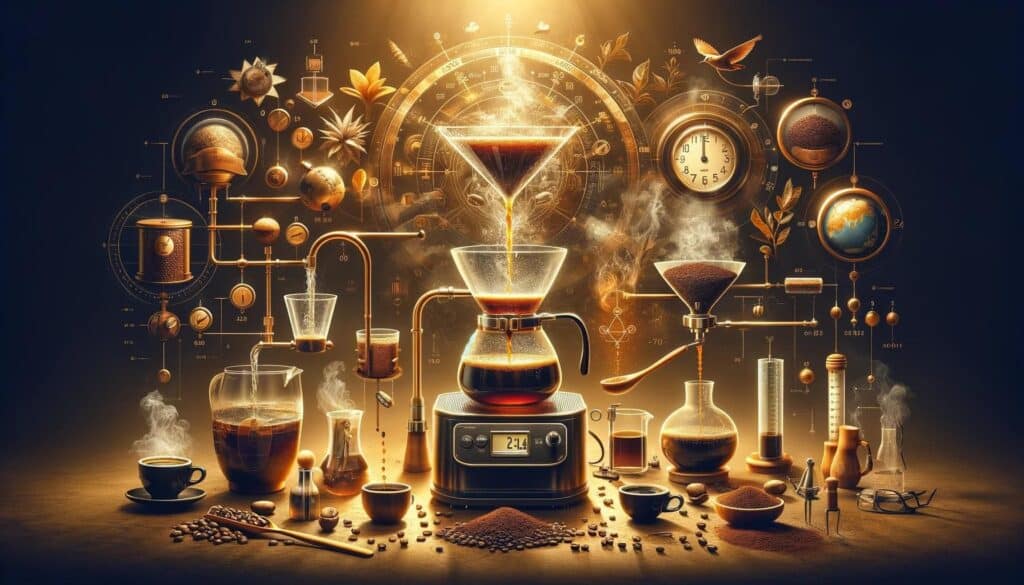
Understanding Coffee Extraction and How It Affects Flavor
Extraction in coffee brewing is the process of pulling flavors and compounds out of coffee grounds using water. This process is crucial in determining the taste and quality of the coffee.
- Under-Extraction: Occurs when too few coffee compounds are extracted. This often happens with too coarse a grind, too short a brewing time, or too low a water temperature. The result is typically a sour, acidic, and weak coffee.
- Over-Extraction: This happens when too many compounds are extracted, often due to too fine a grind, too long brewing time, or too high a water temperature. The coffee may taste bitter, harsh, and astringent.
- Ideal Extraction: This is the sweet spot where the right amount of desirable flavors are extracted without the undesirable ones. The coffee tastes balanced, rich, and full of character.
Balancing the Elements
- Coffee-to-Water Ratio
- The ratio of coffee to water is foundational in determining the strength and flavor of the brew. A common starting point is 1:16 (one part coffee to sixteen parts water). However, this can be adjusted based on personal taste preferences and the brewing method used.
- Brewing Time
- The contact time between water and coffee grounds should be adjusted based on the grind size and brewing method. For example, espresso has a very short brew time, while French press coffee requires a longer steeping time.
- Timing is key; too short may lead to under-extraction, and too long can lead to over-extraction.
- Temperature
- As mentioned earlier, the ideal brewing temperature is between 195°F and 205°F (90°C to 96°C). Consistent temperature within this range helps ensure optimal extraction.
- Some brewing methods, like cold brew, use a different temperature approach, requiring adjustments in time and ratio to achieve the right extraction.
Additional Tips for Mastering Extraction
- Consistency in Grinding: Ensure your coffee is ground uniformly to avoid uneven extraction.
- Experimentation: Don’t be afraid to experiment with different variables. Small adjustments can lead to significant improvements in taste.
- Record Keeping: Keep a record of your brewing methods, including grind size, ratios, time, and temperature. This can help in replicating successful brews and understanding the impact of changes.
Mastering coffee extraction is both an art and a science. By understanding and adjusting the key elements of extraction, you can significantly enhance your coffee brewing skills and enjoy a consistently delightful cup every time.
Serving and Enjoyment
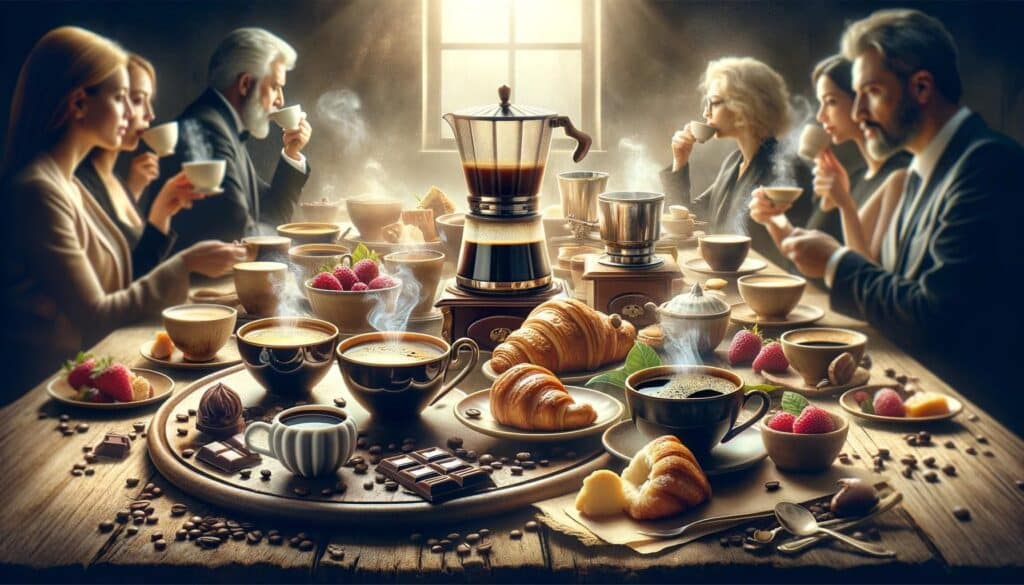
The Art of Serving: Presentation and Pairings
Serving coffee is not just about the drink itself; it’s about creating an experience. The presentation and what accompanies the coffee can significantly enhance the overall enjoyment.
- Presentation:
- Serve in the Right Cup: The type of cup can influence the coffee’s temperature and flavor perception. For instance, espresso is often served in small, thick cups to retain heat, while a cappuccino might be served in a larger, wider cup.
- Aesthetic Appeal: A visually appealing setup adds to the enjoyment. This can include the choice of coffee ware, the arrangement on the tray, and small touches like a sprig of mint or a cinnamon stick.
- Pairings:
- Complementary Flavors: Pair coffee with foods that complement its flavor profile. For example, a light, fruity coffee might pair well with a lemon pastry, while a full-bodied, dark roast might be better suited to a rich chocolate cake.
- Cultural Pairings: Consider traditional pairings from the coffee’s region of origin, like serving a Colombian coffee with panela (unrefined whole cane sugar) or an Ethiopian coffee with a side of popcorn.
Coffee Tasting: Identifying Different Notes and Flavors
Coffee tasting, or cupping, is an art that involves deeply appreciating and analyzing the coffee’s taste profile.
- Smell: Start by smelling the coffee. Aroma is a huge part of taste and can give you clues about the coffee’s flavor notes.
- Slurp: When tasting, slurp the coffee to aerate it and spread it across your palate. This helps to better identify all the nuanced flavors.
- Identify Flavor Notes: Coffee can have a wide range of flavors, from fruity and floral to nutty and earthy. Try to identify these different notes. It can be helpful to use a coffee flavor wheel as a guide.
- Body and Acidity: Pay attention to the body (the weight or thickness of the coffee on your tongue) and the acidity (a bright, tangy quality). These are key components of a coffee’s profile.
- Aftertaste: Consider the aftertaste or finish. How long does the flavor linger, and how does it change over time?
Enjoying coffee is a sensory experience that involves more than just taste. By paying attention to the art of serving and the nuances of coffee tasting, you can turn your coffee drinking into a more rich and fulfilling experience.
Sustainable Coffee Culture

The Importance of Sustainability in Coffee Production
Sustainability in coffee production is crucial for both the environment and the livelihoods of those who grow and process coffee. As coffee is predominantly grown in some of the world’s most biodiverse regions, its cultivation can have a significant environmental impact.
- Environmental Impact:
- Coffee farming, if not done sustainably, can lead to deforestation, water pollution, and loss of biodiversity. Sustainable practices include shade-grown coffee, which preserves native trees, and organic farming, which avoids harmful pesticides and fertilizers.
- Sustainable water management and soil conservation are also vital, as coffee cultivation can be water-intensive and potentially contribute to soil degradation.
- Climate Change:
- Coffee is highly sensitive to climate change. Rising temperatures and changing rainfall patterns can reduce crop yields and quality. Sustainable farming practices help build resilience against climate change effects.
Supporting Fair Trade and Environmentally Friendly Practices
- Fair Trade:
- Fair Trade certification aims to ensure that coffee farmers receive a fair price for their crops, leading to better living conditions, community development, and ethical labor practices.
- Consumers can support fair trade by looking for certified products. This encourages more equitable business practices in the coffee industry.
- Environmentally Friendly Practices:
- Look for certifications like Rainforest Alliance or Organic, which indicate adherence to environmentally friendly and sustainable farming practices.
- These practices not only protect the environment but often lead to a higher quality coffee, as they promote healthy ecosystems and sustainable farming methods.
- Direct Trade:
- Some roasters engage in direct trade, buying straight from the farmers. This can provide farmers with higher payments and forge stronger relationships between farmers and consumers.
- Reducing Waste:
- Coffee consumers can also contribute to sustainability by reducing waste associated with coffee consumption. This includes using reusable cups, composting coffee grounds, and choosing coffee packaged in recyclable or compostable materials.
- Educating and Raising Awareness:
- Education about the challenges of coffee production and the importance of sustainable practices is key. Coffee shops and roasters can play a significant role in this by informing customers about the origins and sustainable credentials of their coffee.
By prioritizing sustainability in coffee culture, consumers, producers, and vendors can all contribute to a more ethical and environmentally friendly coffee industry. This not only helps protect the planet and improve the lives of coffee producers but also ensures the long-term viability of high-quality coffee production.
Conclusion
The journey to brewing the perfect cup of coffee is as rich and diverse as the drink itself. From the careful cultivation of coffee beans to the precise art of roasting and grinding, each step in the coffee-making process contributes to the final experience in the cup. Understanding the nuances of different brewing methods – be it the bold intensity of an espresso or the subtle notes of a pour-over – allows coffee enthusiasts to appreciate the unique characteristics that each technique brings out in the coffee.
The role of water in coffee brewing, often overlooked, is crucial in shaping the coffee’s flavor and quality. Mastering the elements of coffee-to-water ratio, brewing time, and temperature is key to unlocking the full potential of coffee beans. Moreover, the art of serving and the practice of coffee tasting enhance not just the sensory experience but also deepen the understanding and appreciation of coffee’s varied profiles.
Sustainability and ethical practices in coffee production are no longer optional but necessary for the health of our planet and the well-being of coffee-growing communities. As consumers, choosing sustainable and fair-trade coffee options is a powerful way to support these initiatives.
Above all, the world of coffee invites exploration and experimentation. Each cup of coffee is an opportunity to discover new flavors, try different brewing methods, and refine personal tastes. Whether you’re a seasoned coffee aficionado or a casual drinker, there is always something new and exciting in the ever-evolving landscape of coffee. So, embrace the journey, experiment with different beans and brewing styles, and most importantly, take the time to savor and enjoy the diverse world of coffee.

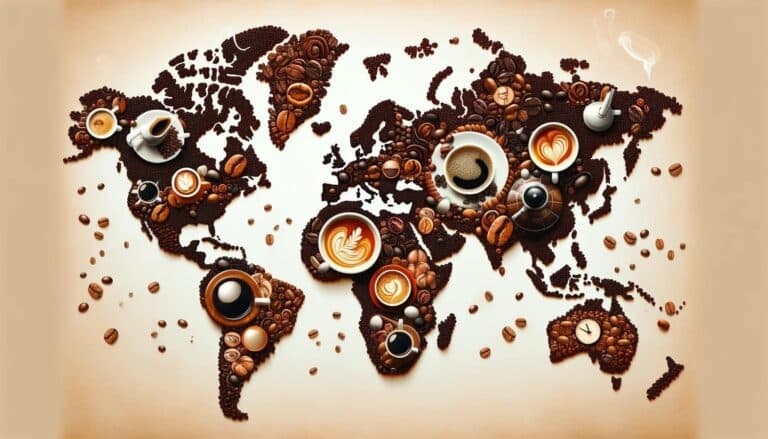

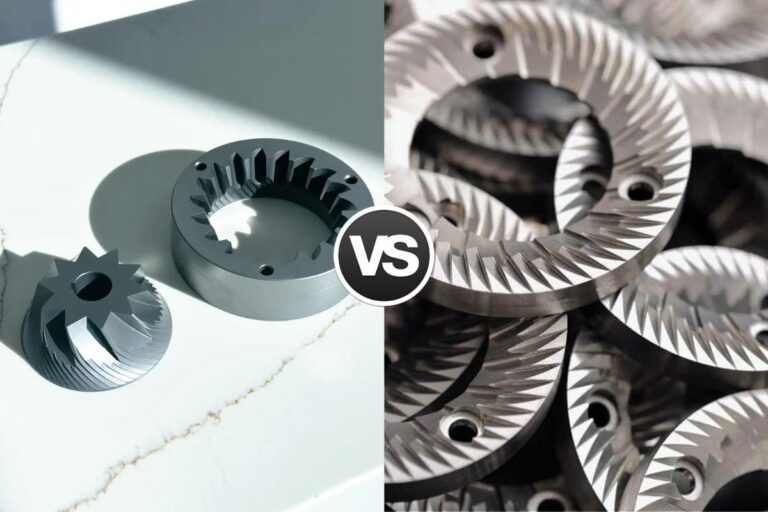

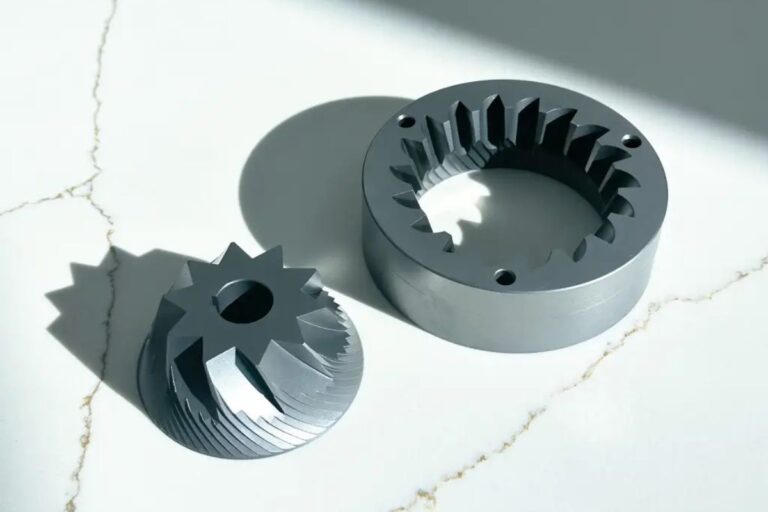

1 thought on “Brewing Perfection: The Art of Coffee”
The piece captures the essence of coffee’s journey from bean to cup so beautifully. It’s not just an exploration of the brewing process but a celebration of coffee as both an art and a science. The thorough breakdown of roasting, grinding, and brewing techniques paired with cultural and scientific insights makes it an inspiring read for coffee enthusiasts at all levels. The emphasis on sustainability and ethical practices adds a meaningful layer, reminding readers of their role in supporting a responsible coffee culture. It’s the kind of content that deepens your appreciation for every sip.